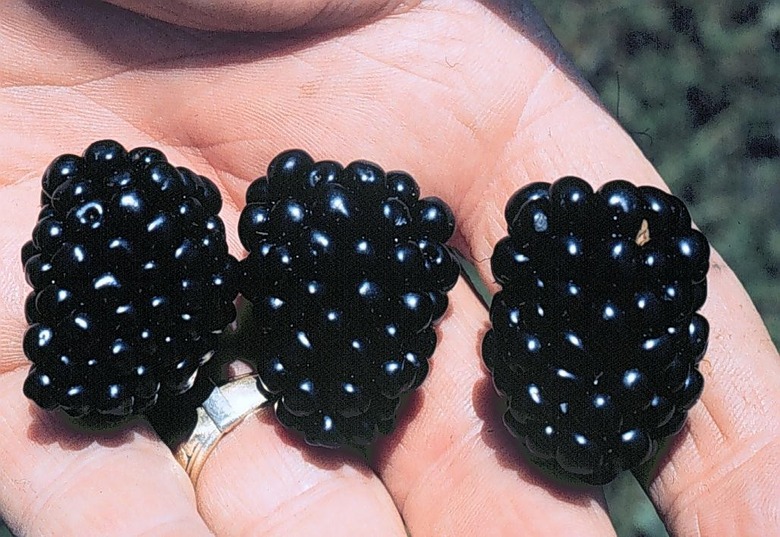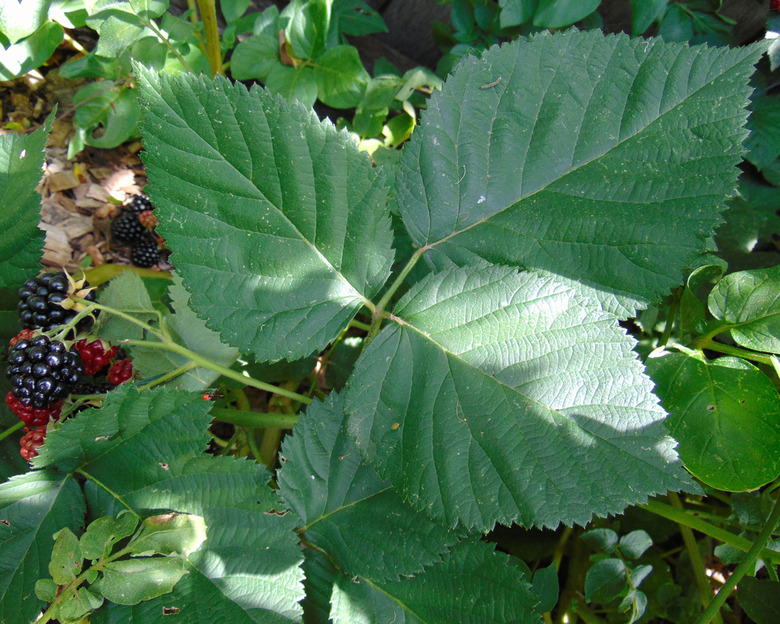Thornless Blackberry Plant Cultivars
Blackberries (Rubus spp.) are a bramble fruit in the same genus as raspberries. Some blackberry plant cultivars have thorns, while others do not.
While thornless cultivars are easier for gardeners to handle, there are other factors to consider when deciding which blueberries to plant, including growth habit, yield size and cold hardiness.
Types of Thornless Blackberries
| Cultivar Name | Growth Habit | Characteristics |
| Apache | Erect | Large fruit; very hardy |
| Arapaho | Erect | Medium-size fruit; small seeds |
| Chester | Semi-erect | Small fruit; late ripening |
| Hull | Semi-erect | Medium-size fruit; good disease resistance |
| Navaho | Erect | Small fruit; strong flavor |
| Triple Crown | Semi-erect | Large yield; flavorful fruit |
Types of Blackberries
The presence or absence of thorns is just one of the characteristics that distinguish blackberry cultivars.
Growth Habits: Trailing, Semi-Erect and Erect
Blackberries are also divided into three classes—trailing, semi-erect and erect—based on their growth habits:
- Trailing blackberries will grow along the ground unless they are supported by a trellis, says the Utah State University Extension.
- Erect blackberry plants can stand on their own, though they often appreciate a trellis too.
- Semi-erect produce some stems, or canes, that hang down along the sides.
Crop Production: Floricanes and Primocanes
Blackberry cultivars are also categorized based on how many crops they produce in a season. Cultivars that produce one crop a year on second-year stems, or canes, are known as floricanes.
Meanwhile, primocane cultivars produce two crops in a growing season: one on second-year canes and one on first-year canes. Primocane cultivars are also known as "everbearing" blackberries.
Thorny vs. Thornless Blackberries
According to the Clemson Cooperative Extension, trailing blackberries are always thorny, while semitrailing are generally thornless.
Erect cultivars of blackberries, however, may be thorny or thornless depending on the cultivar. Erect blackberries are usually more cold hardy than the other cultivars, though thornless erect cultivars may be less cold hardy than those with thorns.
What Are the Best Thornless Blackberries to Plant?
Let's take a look at some of your options when it comes to thornless blackberries.
Thornless Erect Blackberries
A number of thornless erect blackberry cultivars were developed and introduced by the University of Arkansas, including:
Apache
The Apache thornless blackberry is noted among erect cultivars for its large fruit, says the University of Maryland Extension. It is also the hardiest option available and produces a medium-size crop.
Arapaho
The Arapaho blackberry cultivar produces medium-size fruit. It has particularly small seeds, which according to the Arbor Day Foundation makes it a good option for making jam.
This cultivar ripens earlier than other thornless erect cultivars and has the largest yields. It is hardy in USDA zones 4 to 9, which makes it one of the hardiest thornless erect blackberries.
Navaho
It produces smaller fruit compared to Apache and Arapaho and also ripens later, though the fruit has strong flavor. The Navaho blackberry is susceptible to a serious disease of blackberries known as orange rust but has some resistance to rosette disease.
This cultivar is hardy in USDA zones 6 to 8, according to the Missouri Botanical Garden, but yields tend to be smaller.
Thornless Semi-erect Blackberries
Triple Crown
Triple Crown is winter hardy in USDA zones 5 to 8, says the Missouri Botanical Garden. As a floricane, it produces one crop of blueberries a season with a large yield. The fruit of Triple Crown is considered to be among the most flavorful.
Hull
The fruit of the Hull semi-erect blackberry is medium-size and ripens mid-season. It is considered to have a good flavor. Hull blackberry plants are more resistant to disease than some other cultivars.
Chester
The Chester thornless blackberry cultivar has good winter hardiness, though it ripens late, around 10 days after Hull, which can be an issue in colder regions. Its fruit are smaller than that of Hull and Triple Crown.
References
- Missouri Botanical Garden: Rubus 'Navaho'
- University of Maryland Extension: Growing Raspberries and Blackberries in a Home Garden
- Clemson Cooperative Extension: Blackberry
- Utah State University Extension: Selecting Blackberry Cultivars for Utah
- Arbor Day Foundation: Arapaho Blackberry
- Missouri Botanical Garden: Rubus 'Triple Crown'


